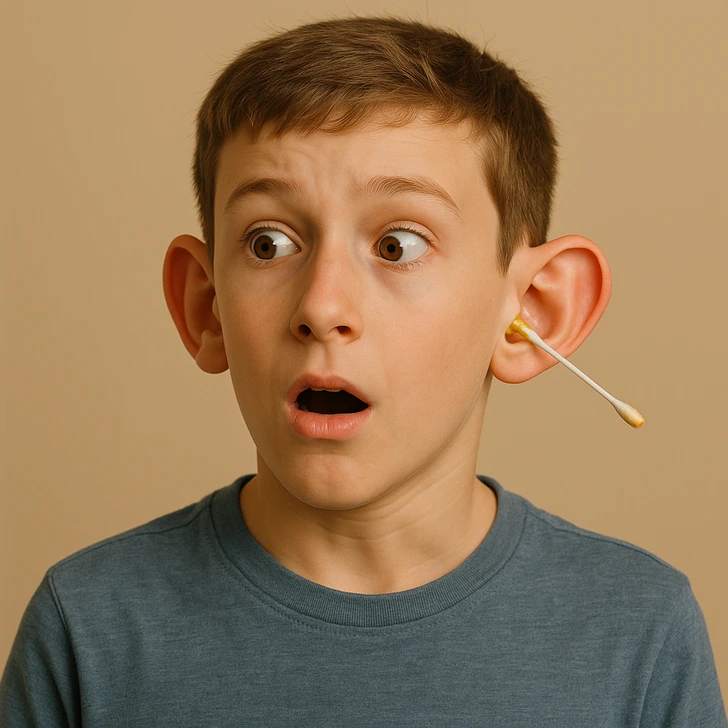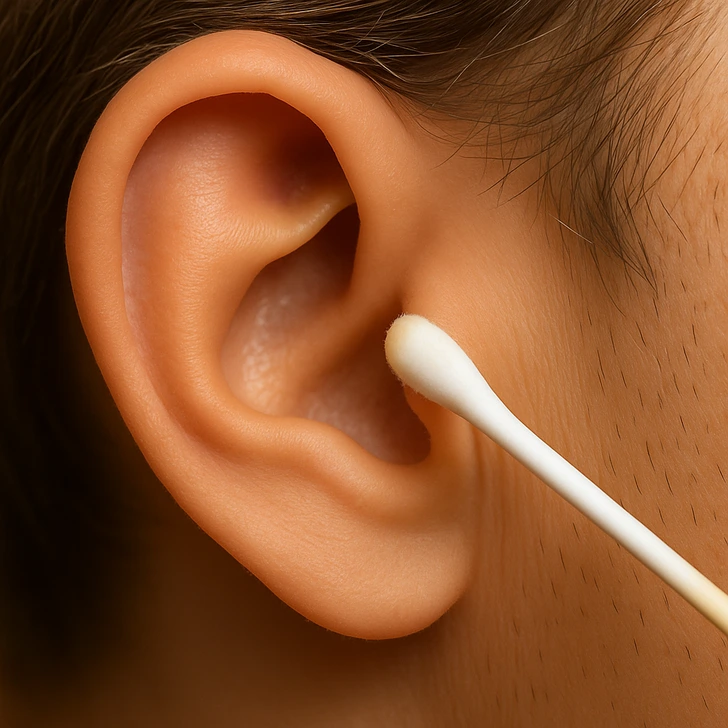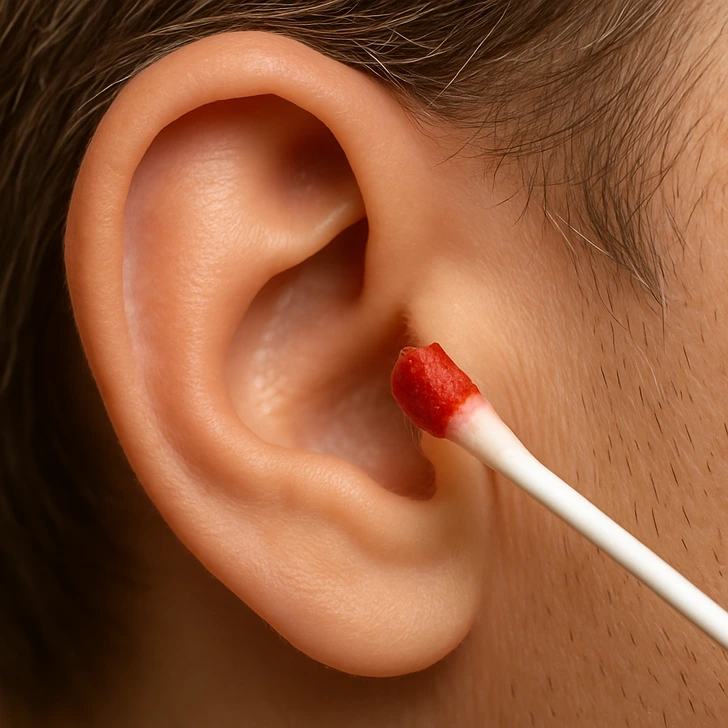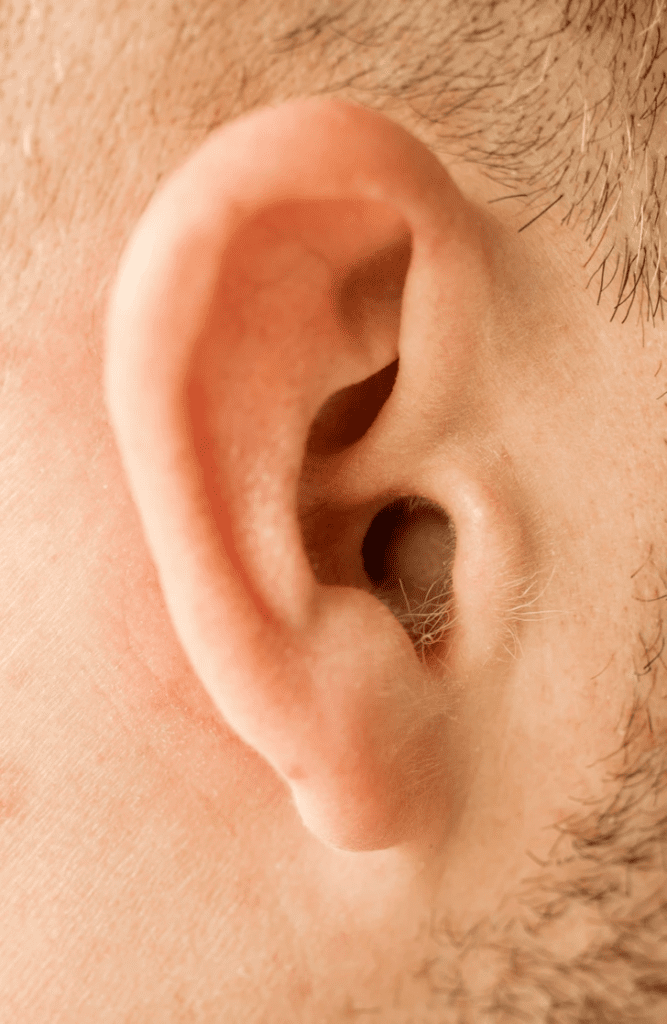Is Your Earwax Trying to Tell You Something?
Most of us don’t spend much time thinking about earwax. It’s just something we clean and forget, right? But what if that yellowish stuff is actually trying to give you a warning about your health? Believe it or not, the color and texture of your earwax could be dropping subtle clues about what’s happening inside your body—and in some cases, those clues are too important to ignore.

So, the next time you’re cleaning your ears, take a closer look. You might spot something worth talking to a doctor about.
Why Earwax Matters More Than You Think
Let’s get one thing clear: earwax isn’t just gross buildup—it plays a vital role in keeping your ears healthy. That waxy coating helps trap dust, dirt, bacteria, and even small insects. It acts like a natural barrier, keeping your ear canals clean and infection-free.
Depending on your genetics, your body may produce either wet earwax (sticky, yellow to brown) or dry earwax (flaky, gray or pale yellow). Both are completely normal and nothing to worry about. However, when your earwax changes in color, texture, or smell, it might be a sign that something’s not quite right.
Video : Is Your Earwax Trying to Tell You Something?
The Common Misunderstanding: What’s Normal and What’s Not
Here’s where many people go wrong. Most assume earwax is always the same shade of yellow, and anything different must be a problem. But that’s not the case. Some variation is completely normal—especially if you work in a dusty or dirty environment.
That said, there are specific changes that shouldn’t be brushed off. Earwax that turns green, red, or unusually smelly might be waving a red flag. And if your ears suddenly feel blocked, irritated, or painful? Yep, your body’s telling you to pay attention.
Let’s break down what your earwax might be trying to say.
Black Earwax: Dusty Days and Dirty Jobs
Seeing black or very dark brown earwax might feel alarming, but in most cases, it’s just old wax. Over time, earwax collects particles from the air—dirt, dust, and debris—especially if you’re around construction sites, work in manufacturing, or are exposed to air pollution regularly.

As that buildup sits in your ear canal, it gets more compacted and darker. Black wax is usually no cause for concern unless it comes with other symptoms like pain, itching, or dizziness.
Dark Brown Earwax: Just Aged, Not Dangerous
Dark brown wax often means it’s simply been there for a while. Think of it like bread left on the counter—it changes over time. While it’s typically harmless, too much dark wax can signal a buildup. That buildup might start muffling your hearing or cause uncomfortable pressure.
If your ears constantly feel full, or sounds seem duller than usual, you may need to look into safe removal options. But a word of advice? Skip the cotton swabs—they usually make things worse.

Green Earwax: A Serious Warning Sign
Now we’re stepping into territory that needs medical attention. Green earwax usually means there’s pus or infection involved. It may come with a bad smell, a sticky texture, and even ear pain.
This is your body reacting to a bacterial invasion. Your ears might be producing extra fluid that mixes with your wax and alters its color. If you spot green wax, especially paired with discomfort or fever, it’s time to see your doctor.

White or Pale Earwax: It Depends on Context
Not all pale wax is problematic. For people with dry earwax (more common in East Asian populations), white or gray flakes are totally normal. However, if you’ve always had darker wax and suddenly notice it turning pale or white—and it’s accompanied by pain or itching—something might be off.
Certain ear sprays or medications can also lighten the color of your wax. But when in doubt, keep track of any other changes in your ears.

Red Earwax: Is There Blood?
Red-tinted wax means there’s blood involved. This might be from a minor scratch inside the ear—perhaps from overzealous cleaning or a cotton swab inserted too deeply. While minor trauma usually heals on its own, don’t ignore red wax if:
- It keeps happening
- You feel pain or pressure
- You notice sticky or watery discharge

In some cases, red wax could point to a perforated eardrum, which can impact your hearing and even your balance. If you’re unsure, a quick check-up is your safest bet.
Should You Even Be Cleaning Your Ears?
Here’s something surprising: most people don’t need to clean their ears at all.
Your ears are self-cleaning. The wax slowly migrates outward, taking unwanted debris with it. But when too much wax builds up, it can block your ear canal, leading to discomfort or even temporary hearing loss.
Video : What These 8 Earwax Colors Say About Your Health
Signs of earwax blockage include:
- A feeling of fullness in the ear
- Decreased hearing
- Ringing or buzzing sounds (tinnitus)
- Itching or mild irritation
- A bad odor coming from the ear
- In rare cases, coughing
If you’re experiencing any of these, resist the urge to dig around. Let a healthcare professional handle it. They may use tools, suction, or water to flush out the blockage safely.
The Gray Area: When to See a Doctor
Not every change in earwax means a trip to the clinic. But you should definitely get checked out if:
- Your wax turns green or smells bad
- There’s visible blood or red streaks
- You experience pain, pressure, or fever
- You feel like your hearing has changed suddenly
- You’re prone to frequent infections or blockages

Also, keep in mind that certain medical conditions (like eczema or psoriasis) can affect your ear canals. If you already have skin sensitivities, you’re more likely to notice irritation and abnormal wax.
Conclusion: Your Earwax Isn’t Just Gross—It’s a Clue
Earwax may not be glamorous, but it’s a built-in health monitor you shouldn’t ignore. Most of the time, variations in color and texture are totally normal. But when something looks, smells, or feels off—especially green or bloody wax—it could be your body’s way of saying, “Hey, something’s wrong!”
Trust your instincts. If your earwax looks strange, has an unusual odor, or comes with other symptoms, don’t wait it out. Listen to your ears—literally. They might be trying to save you a trip to the ER later.
And remember: what you notice early, you can fix easily. So stay curious, stay aware—and maybe check your ears just a little more often.
CONTENT IS PROVIDED FOR INFORMATIONAL PURPOSES ONLY AND IS NOT INTENDED AS A SUBSTITUTE FOR MEDICAL ADVICE. ALWAYS CONSULT YOUR DOCTOR FOR HEALTH CONCERNS.